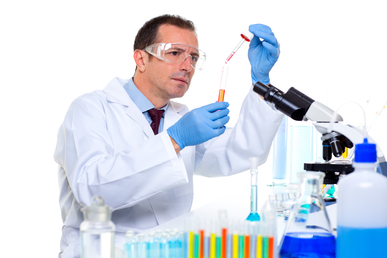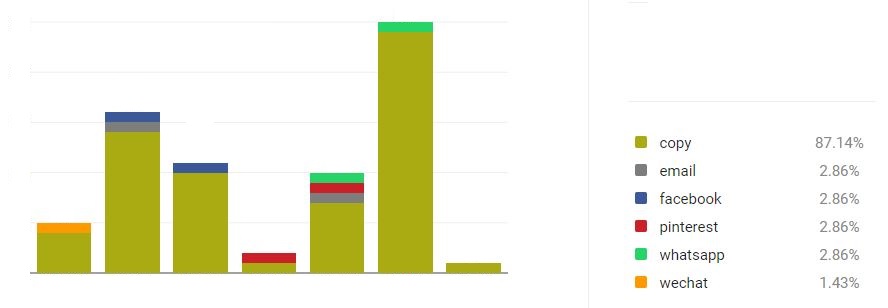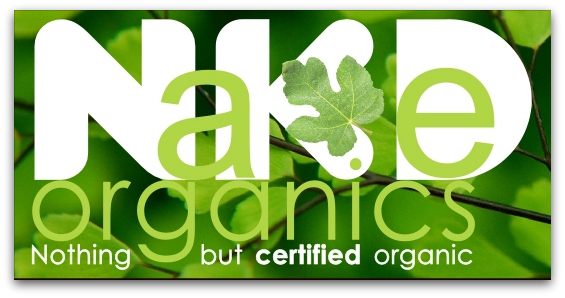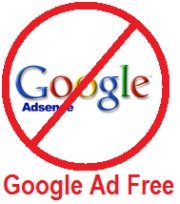|
|
www.moyoway.com |
Buy your Certified Organic |
|
|
CLICK FOR NAKED www.moyoway.com |
Moyo is an African origin word which implies that the
"heart and mind act as one to cultivate the spirit”
Results of our makeup investigation
>Home Page >>Makeup Tips >>>Makeup Investigation
The results of this makeup investigation is based on our opinion and research. It is not scientific or official but merely serves to create public awareness of the complex chemicals that we add to our skin, and for many of us, for most of our lives.

We encourage you to do your own research and make your own educated opinion for any cosmetic that you use.
What we think of the makeup ingredients is only to make you pause, think and then let you decide what is best for you.
This product is an off the shelf commonly used moisturiser / foundation / sunscreen cosmetic. The results speak for themselves. (Sneak peek - click here)
Acrylamide
Is synthetically produced to make Polyacrylamide.
Occurs naturally in fried starchy foods.
It is a suspected carcinogen and is on the European "very high concern" list.
Cigarette smoking is a major source of Acrylamide.
In addition there are strong concerns that it is an organ system toxin, a skin irritant and a neurotoxin.
There is also concern that it is an environmental toxin.
Our makeup investigation opinion = UGLY
Alcohols
Alcohols are natural preservatives.
As far as our skins are concerned, alcohols are typically divided into 3 groups : good alcohols, bad alcohols and cosmetic alcohols.
Some of the bad ones are benzyl alcohol, denatured alcohol, ethanol, ethyl alcohol, isopropyl alcohol, methanol and sd alcohol.
These alcohols are drying, irritating and may be cytotoxic.
Cosmetic commercial grade alcohols are SD (Specially Denatured) Alcohol 23-A, SD Alcohol 40, and SD Alcohol 40-B.
Good alcohols are known as fatty alcohols.
They are cetyl alcohol, stearyl alcohol and cetearyl alcohol.
Our makeup investigation opinion = BAD
Alpha-Isomethyl Ionone
A synthetic fragrance.
The Joint FAO/WHO Committee says it does not present a safety concern at current levels of intake when used as a flavouring agent.
In Europe is included on the list of "allergenic" substances.
In Europe, the presence of Alpha-Isomethyl Ionone must be indicated in the list of ingredients when its concentration exceeds:
- 0.001% in leave-on the skin products
- 0.01% in products that are rinsed off the skin
Our makeup investigation opinion = BAD
Ammonium Polyacrylate
A synthetic thickener.
An eye and skin irritant in high concentrations.
The quantities used in cosmetics are considered safe for humans.
No other known effects.
Our makeup investigation opinion = BAD
Aqua
Water.
Only water that is free of toxins, pollutants and microbes is used in the formulation of makeup and cosmetics.
Also called distilled water, purified water and aqua (used in EU)
Mainly used as a solvent (mixing various ingredients) and as a cleanser.
Our makeup investigation opinion = GOOD
Arachidyl Alcohol
An organic fatty alcohol preservative.
Mainly acts as a stabiliser - stops oils and liquids from separating and adds a soft feel to the liquid.
It can irritate sensitive skin.
Be cautious if you have dry skin.
May be derived from animal sources - animal by-products. (Does not have to be mentioned on the label)
Our makeup investigation opinion = BAD
Benzyl Alcohol
An organic preservative and / or fragrance.
EU law says 1% maximum concentration in a product.
In Europe, it must be indicated in the list of ingredients when concentration exceeds:
- 0.001% in leave-on the skin products
- 0.01% in products that are rinsed off the skin
Some studies have shown positive geno-toxicity results.
Our makeup investigation opinion = BAD
Benzyl Salicylate
A synthetic fragrance and UV absorber (protects the makeup/cosmetic from being spoiled by sunlight)
Listed in Europe as an allergenic.
In Europe, it must be indicated in the list of ingredients when concentration exceeds:
- 0.001% in leave-on the skin products
- 0.01% in products that are rinsed off the skin
If you have an allergy to perfumes, you should avoid this.
Our makeup investigation opinion = BAD
BHT
Known as Butylated hydroxytoluene.
A synthetic preservative - an antioxidant that prevents product spoilage (rancidity). Also used extensively in food.
The Joint FAO/WHO Committee has established a temporary acceptable daily intake of 0 - 0.125 mg/kg of body weight.
A free radical (oxygen) suppressor.
Consumption of BHT has claimed links to child hyperactivity and cancer.
Our makeup investigation opinion = BAD
Butylparaben
A synthetic preservative.
The Joint FAO/WHO Committee has established an acceptable daily intake of 0.10 mg/kg of body weight for the total sum of Ethyl-, Methyl- and Propyl- parabens.
In Europe, Butylparaben is restricted to 0.4% on its own or 0.8% when mixed with other parabens.
The quantities used in cosmetics are considered safe for humans.
Parabens can affect your endocrine system as it is considered weakly oestrogenic.
Studies indicate that when it is applied on the skin, it may react with UVB (sunlight), leading to increased skin ageing and DNA damage (Free radical generator).
Do not use a paraben product on broken skin.
For people that are allergic to parabens, they can cause skin irritation, contact dermatitis and rosacea.
It is toxic in high concentrations.
Although there is no evidence, parabens are being associated with :
- breast cancer tumours
- increasing prevalence of early puberty in girls
Our makeup investigation opinion = BAD
Butylphenyl Methylpropional
A synthetic fragrance.
Listed in Europe as an allergenic.
In Europe, it must be indicated in the list of ingredients when concentration exceeds:
- 0.001% in leave-on the skin products
- 0.01% in products that are rinsed off the skin
If you have an allergy to perfumes, you should avoid this.
Our makeup investigation opinion = BAD
C13-14 Isoparaffin
An organic compound made of hydrogen and carbon derived from petrochemicals.
Used in makeup as a solvent (dissolves ingredients together)
It is considered safe to use by the cosmetic industry.
The cosmetic industry are supposed to use highly refined petroleum.
Unrefined petroleum will include impurities that will cause allergies and contain carcinogens.
Our makeup investigation opinion = BAD
Camellia Sinensis Extract
Known as Green Tea.
Use extensively in cosmetics.
Has antioxidant, anti-inflammatory, anti-aging and anti-carcinogenic properties.
Reduces redness and irritation associated with Rosacea.
Works well with sunscreens.
Improves skin elasticity.
No reported side effects.
International Fragrance Association Codes & Standards has a restriction on the concentration used in fragrances / perfumes.
Our makeup investigation opinion = GOOD
Cetearyl Alcohol
An organic fatty alcohol preservative.
Acts as a stabiliser - stops oils and liquids from separating and reduces foaming.
There is no evidence of this alcohol being a skin irritant or sensitiser.
Be cautious if you have dry skin.
May be derived from animal sources - animal by-products. (Does not have to be mentioned on the label)
Our makeup investigation opinion = GOOD (if not derived from animals)
Cetearyl Glucoside
A natural or synthetic ingredient used as a surfactant and emulsifier.Makes oil and dirt stick to water for easy washing off.
There is no evidence of this ingredient being a skin irritant or sensitiser.
Our makeup investigation opinion = GOOD
Cetyl Alcohol
An organic fatty alcohol preservative derived from coconut oil.
Acts as a stabiliser - stops oils and liquids from separating and reduces foaming.
Gives the skin a soft appearance and adds lubrication to the formula.
There is no evidence of this alcohol being a skin irritant or sensitiser.
Be cautious if you have dry skin.
May be derived from animal sources - animal by-products. (Does not have to be mentioned on the label)
Our makeup investigation opinion = GOOD (if not derived from animals)
Citronellol
A synthetic fragrance.
The Joint FAO/WHO Committee has issued an acceptable daily intake of up to 0.5 mg/kg of body weight.
It is restricted by the International Fragrance association because of sensitisation concerns.
If you have an allergy to perfumes, you should avoid this.
Our makeup investigation opinion = GOOD
Cocos Nicifer Oil
Coconut oil, an edible oil that enhances the appearance of dry or damaged skin.
It reduces moisture loss by forming a barrier on the skin's surface.
It is a very rare allergenic causing contact dermatitis.
Other than being a rare allergenic, there are no other reported side effects.
Our makeup investigation opinion = GOOD
Dimethicone
A silicone polymer used to slow moisture loss and soothes the skin from irritations.
It also soothes contact dermatitis, reduces redness caused by Rosacea and acts an anti-inflammatory.
The Joint FAO/WHO Committee has established an acceptable daily intake level of 0 to 1.5 mg/kg of body weight.
There are no reported side effects when used on the skin.
Our makeup investigation opinion = GOOD
Dimethiconol
A synthetic silicone used as a "Skin Conditioning Agent".
Adds lubrication and creates a barrier over your skin to reduce loss of moisture.
There is no evidence that it causes allergenic reactions or any other safety issues.
It is claimed that the quantities used in cosmetics are considered safe for humans.
Our makeup investigation opinion = GOOD
Disodium EDTA
A synthetic preservative - protects the product from spoiling, protects the fragrance and keeps the clarity (or appearance) of the liquid.
In low doses, some studies show this ingredient to be mildly cytotoxic (affects your cells) and geno-toxic (affects the DNA thereby making the cell mutagenic or cancergenic)
Studies of large doses (orally) showed reproductive and developmental effects.
It is claimed that the quantities used in cosmetics are considered safe for humans.
Because EDTA is used so extensively, it has become an environmental polluter or better known as a Persistent Organic Polluter - POP.
It is long range (travels the earth) and bio-accumulative (absorbed faster into your body than what your body can get rid of it).
It is resistant to environmental degradation.
Examples of POP's are Agent Orange, DDT and Chlordane.
POP's can cause death and illnesses.
They disrupt the endocrine, reproductive and immune systems.
They cause neuro-behavioural disorders and cancers (possibly including breast cancer)
Typical POP exposure is from your food or environment.
Our makeup investigation opinion = BAD
Ethylparaben
A synthetic preservative.
The Joint FAO/WHO Committee has established an acceptable daily intake of 0.10 mg/kg of body weight for the total sum of Ethyl-, Methyl- and Propyl- parabens.
In Europe, Ethylparaben is restricted to 0.4% on its own or 0.8% when mixed with other parabens.
The quantities used in cosmetics are considered safe for humans.
Parabens can affect your endocrine system as it is considered weakly oestrogenic.
Studies indicate that when it is applied on the skin, it may react with UVB (sunlight), leading to increased skin ageing and DNA damage (Free radical generator).
Do not use a paraben product on broken skin.
For people that are allergic to parabens, they can cause skin irritation, contact dermatitis and rosacea.
It is toxic at high concentrations.
Although there is no evidence, parabens are being associated with :
- breast cancer tumours
- increasing prevalence of early puberty in girls
Our makeup investigation opinion = BAD
Genotoxicity
This is the action of a harmful affect on a cell's genetic integrity. Genotoxic ingredients interact with a cell's DNA. This harmful interaction potentially makes the cell mutagenic or cancerogenic.
Genotoxins can be passed down. For example, a genotoxin that affects an adults sperm or eggs can pass the harmful genetic changes down to their descendants who have never been exposed to this genotoxin.
Geraniol
A synthetic or natural fragrance.It is restricted by the International Fragrance association because of sensitisation concerns.
Listed in Europe as an allergenic.
In Europe, it must be indicated in the list of ingredients when concentration exceeds:
- 0.001% in leave-on the skin products
- 0.01% in products that are rinsed off the skin
If you have an allergy to perfumes, you should avoid this.
Our makeup investigation opinion = BAD
Hexyl Cinnamal
Known as Hexyl cinnamaldehyde.
A synthetic or natural fragrance.
Class B allergen according to DIMDI classification.
An irritant in high concentrations.
If you have an allergy to perfumes, you should avoid this.
Our makeup investigation opinion = BAD
Glycerin
Known as Glycerol.
A synthetic or natural sugar alcohol that draws moisture from the air thereby increasing the water content in the top layers of the skin.
It is good for sensitive skins (also used in Glycerin soap)
Pure Glycerin is an effective treatment for calluses, cuts, rashes, psoriasis, burns, bites and bedsores.
There are no reported side effects
Our makeup investigation opinion = GOOD
Hydrolysed Wheat Protein
A wheat protein.
Used as a skin conditioner.
Adds lubrication and creates a barrier over your skin to reduce loss of moisture.
Contains gluten.
Wheat protein causes allergic contact dermatitis in some people.
Our makeup investigation opinion = GOOD
Hydroquinone
A skin whitening agent in higher concentrations (1% to 5%) or as an antioxidant in small concentrations (0.1%)
At higher concentrations, it decreases the formation of melanin.
- Used to lighten areas of darkened skin such as freckles, age spots, chloasma, and Melasma.
- Not to be used on any skin that is damaged, sunburnt, irritated and before sun exposure.
- It is a known human toxin and carcinogenic.
At lower concentrations, it is considered safe to use by the cosmetic industry.
Our makeup investigation opinion = UGLY
Hydroxyisohexyl 3-Cyclohexene Carboxaldehyde
A synthetic fragrance.
It is restricted in cosmetics because of sensitisation.
In Europe is included on the list of "allergenic" substances.
In Europe, the presence of Alpha-Isomethyl Ionone must be indicated in the list of ingredients when its concentration exceeds:
- 0.001% in leave-on the skin products
- 0.01% in products that are rinsed off the skin
Our makeup investigation opinion = BAD
Isobutylparaben
A synthetic preservative.
The Joint FAO/WHO Committee has established an acceptable daily intake of 0.10 mg/kg of body weight for the total sum of Ethyl-, Methyl- and Propyl- parabens.
In Europe, Isobutylparaben is restricted to 0.4% on its own or 0.8% when mixed with other parabens.
The quantities used in cosmetics are considered safe for humans.
Parabens can affect your endocrine system as it is considered weakly oestrogenic.
Studies indicate that when it is applied on the skin, it may react with UVB (sunlight), leading to increased skin ageing and DNA damage (Free radical generator).
Do not use a paraben product on broken skin.
For people that are allergic to parabens, they can cause skin irritation, contact dermatitis and rosacea.
It is toxic at high concentrations.
Although there is no evidence, parabens are being associated with :
- breast cancer tumours
- increasing prevalence of early puberty in girls
Our makeup investigation opinion = BAD
Isohexadecane
An organic compound made of hydrogen and carbon derived from petrochemicals.
Used in makeup as a solvent (dissolves ingredient together) to create a rich and non-greasy makeup texture.
It is considered safe to use by the cosmetic industry.
The cosmetic industry are supposed to use highly refined petroleum to create these ingredients.
Unrefined petroleum will include impurities that will cause allergies and contain carcinogens.
There are no reported side effects when used on the skin.
There is some concern that it is an environmental toxin and that it is bio-accumulative and / or persistent.
Our makeup investigation opinion = BAD
Isopropyl Isostearate
A synthetic ingredient made from Isopropyl alcohol and stearic acid.
Acts as a lubricant in the makeup formula, giving the skin a soft and smooth appearance.
There may be a very mild skin irritation in rare cases.
No other reported side effects.
May be derived from animal sources - animal by-products. (Does not have to be mentioned on the label)
Our makeup investigation opinion = GOOD (if not derived from animals)
Laureth-7
A mixture of ethylene oxide and lauryl alcohol - a process called ethoxylation.
Makes oil and dirt stick to water for easy washing off.
A by-product of ethoxylation is 1,4-dioxane - a carcinogenic toxin.
1,4-dioxane can be removed by purification - this purification process is not mentioned on the label.
For this reason, it may contain 1,4-dioxane.
Be cautious if you have dry skin.
Our makeup investigation opinion = BAD
Limonene
A synthetic or natural fragrance.
A skin and respiratory irritant in high concentrations.
No evidence for carcinogenicity or toxicity in humans.
There is evidence of dermatitis for those that are sensitive to Limonene.
If you have an allergy to perfumes, you should avoid this.
Our makeup investigation opinion = BAD
Methylparaben
A synthetic preservative.
The Joint FAO/WHO Committee has established an acceptable daily intake of 0.10 mg/kg of body weight for the total sum of Ethyl-, Methyl- and Propyl- parabens.
In Europe, Methylparaben is restricted to 0.4% on its own or 0.8% when mixed with other parabens.
The quantities used in cosmetics are considered safe for humans.
Parabens can affect your endocrine system as it is considered weakly oestrogenic.
Studies indicate that when it is applied on the skin, it may react with UVB (sunlight), leading to increased skin ageing and DNA damage (Free radical generator).
Do not use a paraben product on broken skin.
For people that are allergic to parabens, they can cause skin irritation, contact dermatitis and rosacea.
It is toxic at high concentrations.
Although there is no evidence, parabens are being associated with :
- breast cancer tumours
- increasing prevalence of early puberty in girls
Methylparaben is also an ingredient of grapefruit seed extract (natural preservative)
Our makeup investigation opinion = BAD
Myristyl alcohol
An organic fatty alcohol preservative.
Mainly acts as a stabiliser - stops oils and liquids from separating and adds a soft feel to the liquid.
It can irritate sensitive skin.
Be cautious if you have dry skin.
May be derived from animal sources - animal by-products. (Does not have to be mentioned on the label)
Our makeup investigation opinion = GOOD (if not derived from animals)
Neurotoxin
These are substances that interfere (or inhibit) with the electrical activities of nerves.
This interference prevents them from functioning.
Examples of Neurotoxins are lead, aluminium, mercury, arsenic, ammonia, n-Hexane (a low cost cleaner – cheaper than alcohol), Nitric Oxide and ethanol.
It is also found in the skin of puffer fish, rattlesnake venom, black widow spider venom, etc.
Death from Neurotoxins can be within minutes.
Our makeup investigation opinion = UGLY
Niacinamide
A synthetic form of vitamin B3 that enhances the appearance of dry or damaged skin.It reduces flaking and restores suppleness.
An anti-inflammatory and used in acne treatments.
It is toxic in high doses (+3 grams per day)
There are no reported side effects when used on the skin.
When exposed to UV, it can suppress melanin from reaching the skin thereby limiting age spots, freckles, and hyper-pigmentation.
Our makeup investigation opinion = GOOD
Panthenol
A derivative of vitamin B5, and acts as a lubricant, giving the skin a soft and smooth appearance.
It improves skin hydration and reduces itching and inflammation.
It speeds up healing of epidermal wounds.
In very high concentrations, it can be a skin irritant.
It is considered safe to use by the cosmetic industry.
Our makeup investigation opinion = GOOD
Palmitic Acid
A fatty acid used to "soften" (emollient and lubricant) and adds a pearly effect to some makeup products.There is no evidence to suggest that this ingredient is a hazard to the public at current levels used in cosmetics.
May be derived from animal sources - animal by-products. (Does not have to be mentioned on the label)
Our makeup investigation opinion = GOOD (if not derived from animals)
Parfum
Known as perfume.
A mixture of fragrant essential oils or aroma compounds, fixatives and solvents.
Parfums / perfumes can be manufactured synthetically or extracted from plant or animal sources.
Due to the many "origins" of parfum, safety of these ingredients ranges from GRAS (Generally Recognised as safe) to carcinogenic to allergenic to oestrogenic.
They can cause asthmatic reactions, headaches, skin reactions, nausea, respiratory problems and cancer.
Due to its extensive global use, perfumes are found in breast milk, human fat and natural water deposits.
In the US, perfumes are regulated (by the FDA) as an ingredient.
Due to the need for protection of trade secrets, companies rarely give the full listing of parfum ingredients, regardless of their effects on health.
In Europe, as from 11 March 2005, 26 fragrance ingredients have been categorised as allergens. (Many old perfumes had to be reformulated to adhere to these new regulations)
This is evidence that the cosmetic industry have the capability to reformulate when they have to
Our makeup investigation opinion = BAD
PEG-100 Stearate
PEG Stearates are derived from stearic acid, a naturally occurring fatty acid.
Makes oil and dirt stick to water for easy washing off.
It is an irritant and sensitiser at high concentrations (25% and more)
Do not use on injured or damaged (broken) skin as there is a risk of organ toxicity.
All PEGs (including PEG 100 Stearate) can contain harmful impurities such as 1,4-dioxane (a known carcinogen), Ethylene Oxide (increases the risk of uterine and breast cancers, leukaemia and brain cancer), PAH's (increases the risk of breast cancer), lead, iron and arsenic.
May be derived from animal sources - animal by-products. (Does not have to be mentioned on the label)
Our makeup investigation opinion= BAD
Phenoxyethanol
A synthetic preservative.
This ingredient is used extensively in cosmetic products and is considered safe to use by the cosmetic industry.
Tests with high doses noted increased weights of some organs in the body.
According to a warning by the FDA of 2008 "Phenoxyethanol is a preservative that is primarily used in cosmetics and medications.”
”It also can depress the central nervous system and may cause vomiting and diarrhoea, which can lead to dehydration in infants"
See Article 4 for a story on this ingredient.
Our makeup investigation opinion = BAD
Polyacrylamide
A synthetic ingredient, made from Acrylamide, that keeps makeup on the skin in wet, damp and moist conditions.
Considered a moderate hazard ingredient.
The biggest concern is the presence of Acrylamide left over from the manufacturing process.
Acrylamide is a known neurotoxin and organ system toxin.
In the presence of heat and light, there are also concerns that Polyacrylamide breaks down (de-polymerises) to form Acrylamide.
There are also concerns that it is an environmental toxin and persistent and/ or bio-accumulative.
Our makeup investigation opinion = BAD
Polydimethylsiloxane
A synthetic silicone used as a "Skin Protectant".
Sometimes called a dimethicone.
Creates a barrier over your skin to reduce loss of moisture and fills in fine lines giving the skin a "plump" look.
The Joint FAO/WHO Committee established an acceptable daily intake level of 0 to 1.5 mg/kg of body weight.
There is no evidence that it causes allergenic reactions.
It is claimed that the quantities used in cosmetics are considered safe for humans.
There are some concerns when used internally, such as breast implants. It is now used less because of this concern.
Our makeup investigation opinion = GOOD
Propylparaben
A synthetic preservative.
The Joint FAO/WHO Committee has established an acceptable daily intake of 0.10 mg/kg of body weight for the total sum of Ethyl-, Methyl- and Propyl- parabens.
In Europe, Butylparaben is restricted to 0.4% on its own or 0.8% when mixed with other parabens.
The quantities used in cosmetics are considered safe for humans.
Parabens can affect your endocrine system as it is considered weakly oestrogenic.
Studies indicate that when it is applied on the skin, it may react with UVB (sunlight), leading to increased skin ageing and DNA damage (Free radical generator).
Do not use a paraben product on broken skin.
For people that are allergic to parabens, they can cause skin irritation, contact dermatitis and rosacea.
It is toxic at high concentrations.
Although there is no evidence, parabens are being associated with :
- breast cancer tumours
- increasing prevalence of early puberty in girls
Our makeup investigation opinion = BAD
Stearic Acid
A fatty acid used to "soften" (emollient and lubricant) and add a pearly effect to some makeup products.
There is no evidence to suggest that this ingredient is a hazard to the public at current levels used in cosmetics.
May be derived from animal sources - animal by-products. (Does not have to be mentioned on the label)
Our makeup investigation opinion = GOOD (if not derived from animals)
Stearyl Alcohol
An organic fatty alcohol preservative derived from coconut oil.
Acts as a stabiliser - stops oils and liquids from separating and reduces foaming.
Gives the skin a soft appearance and adds lubrication to the formula.
There is no evidence of this alcohol being a skin irritant or sensitiser.
Be cautious if you have dry skin.
May be derived from animal sources - animal by-products. (Does not have to be mentioned on the label)
Our makeup investigation opinion = GOOD (if not derived from animals)
Sodium Ascorbyl Phosphate
Known as Vitamin C and works as an antioxidant to reduce product spoilage due to oxidation (reacting with oxygen)
It is an irritant and sensitiser in high concentrations.
The Joint FAO/WHO Committee has established an acceptable daily intake of 0 to 15 mg/kg of body weight.
Concentrations should be 5% in most formulas, and up to .1% in sunscreens.
Our makeup investigation opinion = GOOD
Sodium Chloride
Table salt.
Used in makeup to thicken the water portion of the product.
There is no evidence to suggest that this ingredient is a hazard to the public at current levels used in food and cosmetics.
Our makeup investigation opinion = GOOD
Sucrose Polycottonseedate
A fatty acid that acts as a lubricant and gives the skin a soft and smooth appearance.
It is considered safe to use by the cosmetic industry.
No reported side effects.
Our makeup investigation opinion = GOOD
Tocopheryl Acetate
Known as vitamin E and is a fat soluble antioxidant.
Used to enhance the appearance of dry or damaged skin. Reduces flaking and restores suppleness.
It is a skin sensitiser that can cause itching, burning, scaling, hives and blistering of the skin.
It is considered a moderate hazard with some people developing contact dermatitis.
It is considered safe to use by the cosmetic industry.
High dose tests have resulted in animal tumours.
There is also risk of contamination by Hydroquinone which is a known toxin and carcinogenic.
Our makeup investigation opinion = GOOD (Use with caution)
Our results
Whenever we buy makeup, many of us do some online research or consult with friends or sales people for advice and tips.
Normally the conversation revolves around things like too oily or sticky or the colour is not right and so on.
What nobody (including the label) will ever tell you is whether or not the ingredients are good for your body.
Imagine that an additional label on the cosmetic product looked like this?
Effects of the Ingredients on Your Body :
4 Ugly's
25 Bad's
23 Good's
You would think twice before you buy it - this is the power of labelling.
No wonder the GMO companies like Monsanto are fighting not to have GMO food labeled.
In case you are not sure about GMO, here is our opinion ...
GMO = Ugly
Why do so many ingredients sit on the fence between bad and ugly?
Check your draws - your makeup ingredients will surprise you too.
Surely the performance of these products can be maintained by using kinder ingredients?
Surely labelling can be simplified and improved to fit in with consumer perspectives?
Recently, many products had to be reformulated when the EU listed a number of ingredients as allergens – and they did it.
When there was a big public outcry over the use of phthalates, all the big makeup manufacturers reformulated their products to exclude this ingredient – and they did it again.
Why can the cosmetic manufacturers not do it one more time and make us and our world a healthier place?
Parabens
From the article, you will notice a significant list of parabens. Parabens are preservatives used in products that contain water. Water is a breading ground for bacteria, moulds, fungus and a preservative is required to stop the bacteria from making the product go off (and possibly make you sick too)
The problem is that parabens are being linked to cases of cancer and other diseases. This is making everyone wary. Prevention is better than cure, so many consumers are looking for paraben free cosmetics as a precaution.
This short video provides a good casual perspective of parabens for you to think about. Remember, "when you know better, you do better"
Makeup Investigation (Back to Top)








